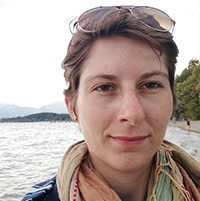Endangered Species Task-Force Director
How did you end up working at the DREAL?
I first joined the DREAL on my end of study internship as part of my training to become an agronomic engineer. As an intern, my job was to assess the 2012-2016 National Hamster Action Plan (PNA*). To maintain this momentum, I was hired to start drafting the 2019-2028 PNA.
What is your role and how does it relate to LIFE Alister?
Originally, LIFE took inspiration from several activities included on the 2012-2016 PNA and then put together an innovative action plan which sought to test and trial practices that are favourable to the survival of the European hamster in the long term. As LIFE partners also contribute to the PNA, during the PNA assessment they were able to provide us with their insight and feedback from the experience they had acquired. At this early stage, with the help of all European hamster conservationists involved, we were able to pinpoint the major issues for the next plan to focus on.
As regards drawing up the new PNA, my role involved coordinating all plan contributors and putting their heads together to come up with a better strategy to employ based on the results of the assessment. The 2019-2028 PNA in support of the European hamster and of the biodiversity of the Alsace lowland is in the process of being finalised.
We were particularly careful to ensure that we took account of all the findings supplied by LIFE activities. Certain activities of the new PNA constitute the follow-up of the activities carried out by LIFE, but have been slightly modified and take a different direction in response to the findings that were obtained (field tests, connections between populations, suburban trials, etc.). The goal of this plan is to reach the sustainability threshold for the species. Activities on the plan will help to revive populations of the European hamster whilst bridging farming and urban activities, to raise awareness with the general public on the issues of hamster conservation and to expand knowledge on the biology of the species.
This first plan, which will last for 10 years as opposed to five like the previous one, will focus on placing the issue of hamster conservation in a wider context, that of conserving the ecosystems of the agricultural plain.
What do you find interesting about your job?
Working in a concerted manner with all stakeholders to find a way to combine human activity with issues of biodiversity is what inspires me the most. Finding sustainable solutions is highly motivating, all the more so when they address today’s major societal challenges, like placing importance on biodiversity and employing a fresh approach to farming and land management.
What are your hopes for future?
The LIFE Alister project has succeeded in strengthening ties between hamster conservationists and has fostered a real sense of engagement and momentum amongst all the farmers involved on the project. What we really need is for this enthusiasm to continue into the future, with the implementation of a new European financial programme.
*Plan National d’Actions (National Action Plan)


